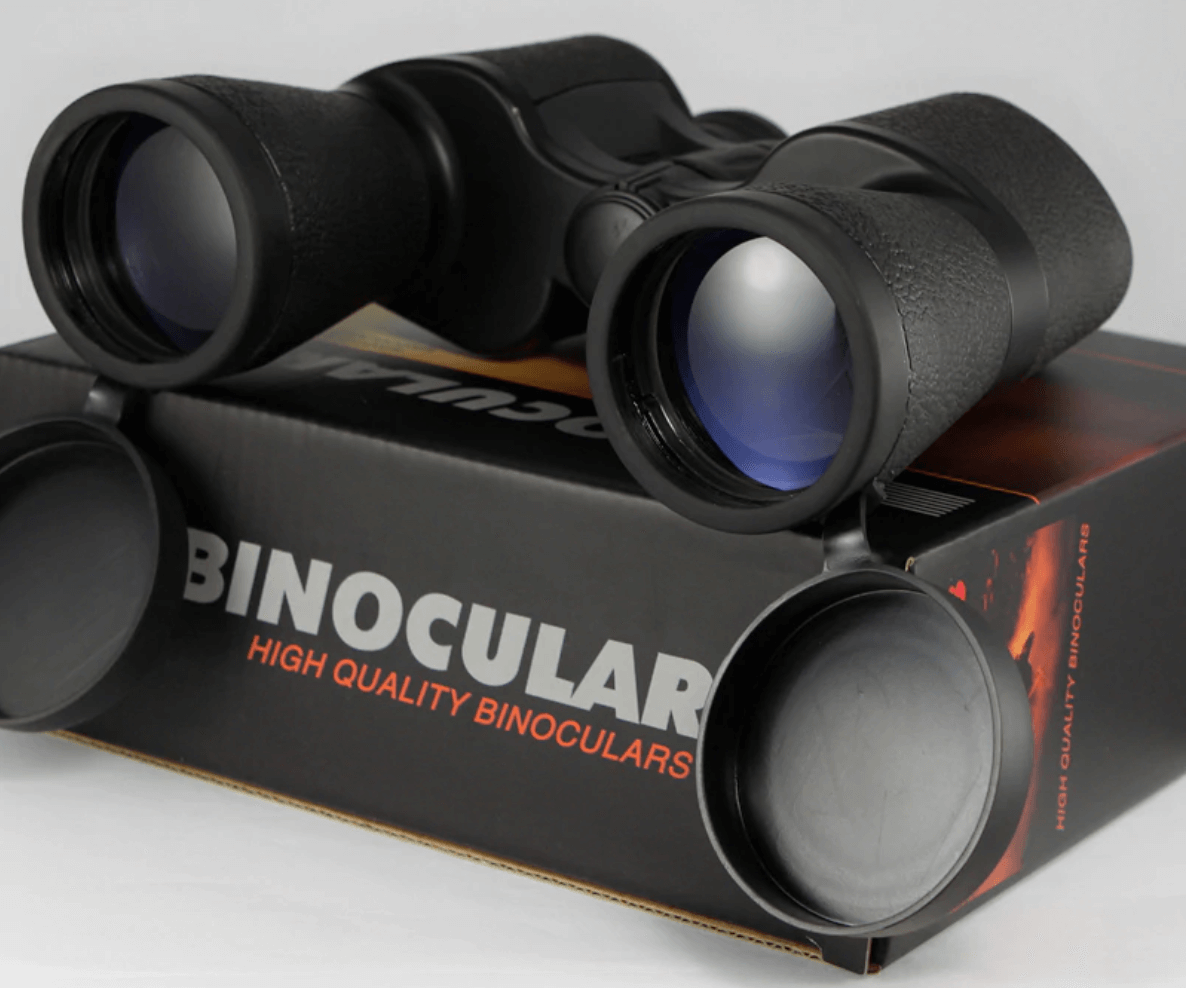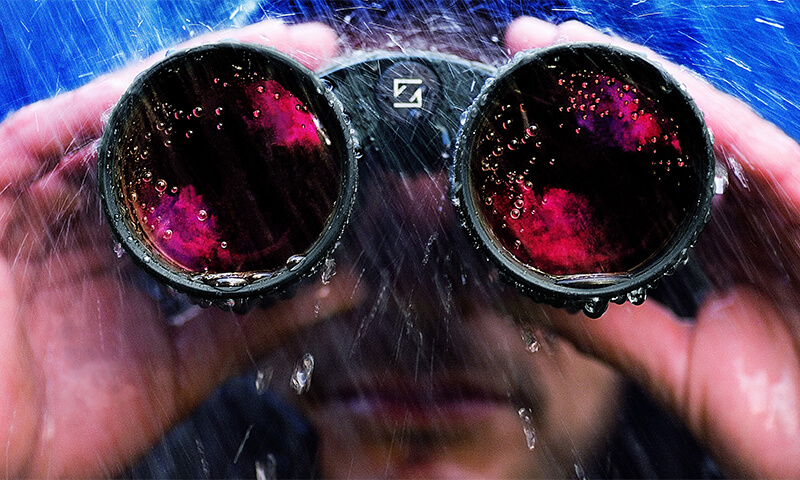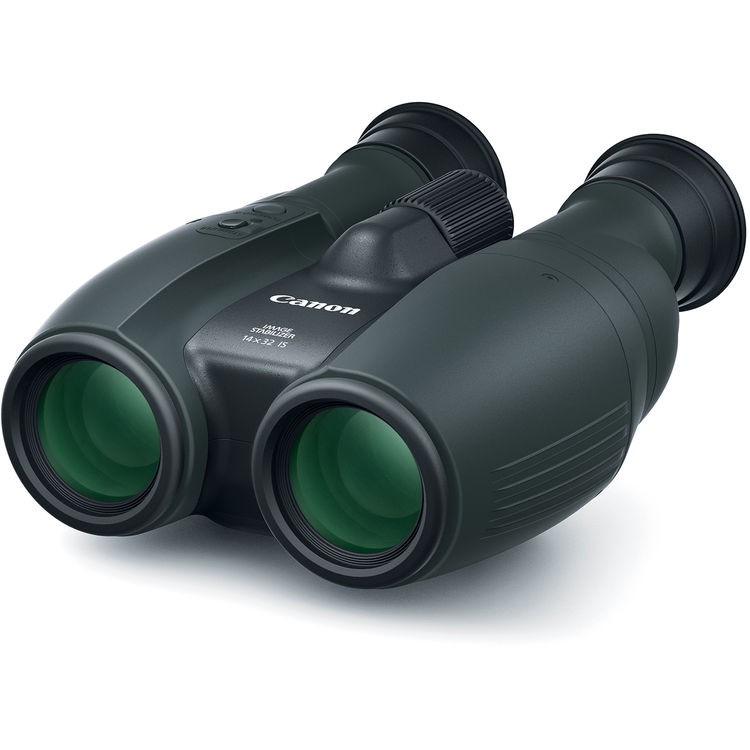What Does Image Quality Mean in Binoculars?
Contents

When we choose binoculars the most important thing we pay attention to is the image quality.
When we look through binoculars we want to see clear, bright and sharp image. We want to be able to see objects in full details as if we were close to them.
But if you have no experience in the optics you may not notice the difference in the image quality of different binoculars.
From my experience I can tell you that when choosing binoculars you better try different types of optical instruments so you can see the difference by comparing them.
In this short post of mine I will try to help you understand binoculars better and make the right choice.
What to look for in binoculars for the best image quality?
There are mainly several things you must keep in mind when choosing binoculars if you are looking for the best image quality.
1. Prism type
2. Porro/Roof prism
3. Lens coating
4. Objective (front lens)
5. Exit pupil
6. Zoom vs standard binoculars
All these factors affect image quality in binoculars. If you know how to choose a binocular you will get the image quality you will be totally satisfied with.
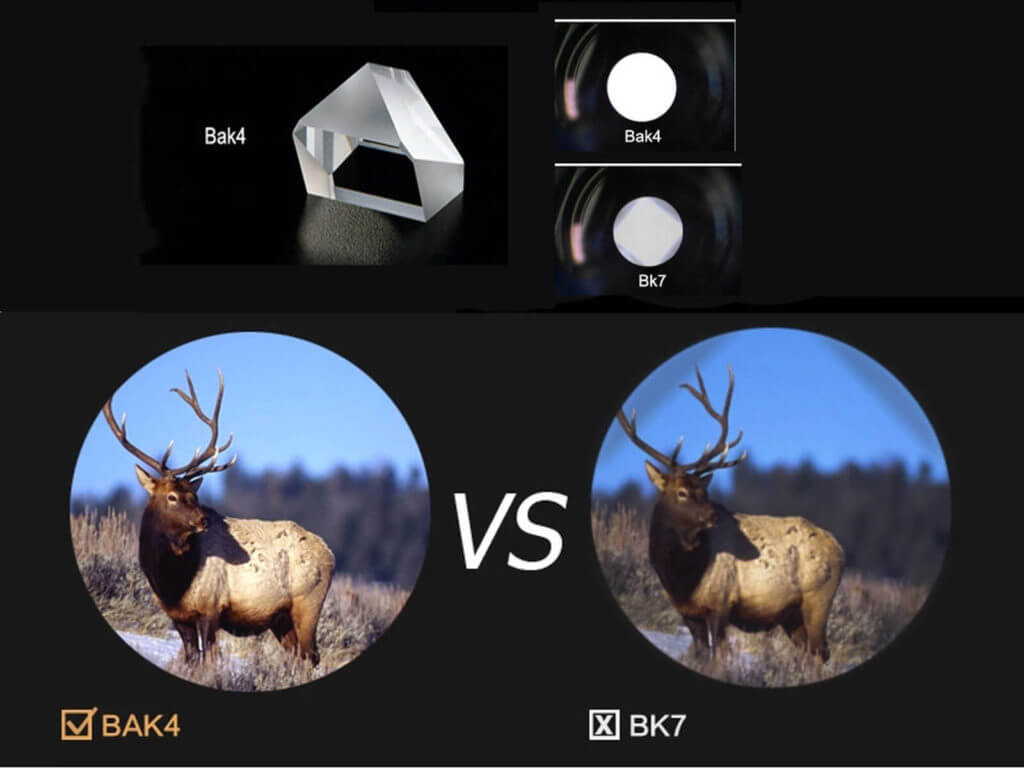
1. Prism type
So, the first thing is the prism type. There are several types of prisms, such as BK-7, BAK-4 and ED glass.
BK-7 prism is the cheapest and image quality is far from being perfect. Image in such binoculars is always a little dark, blurred and with a poor color palette.
Prism quality is very cheap and used in low quality binoculars. If you are looking for a binocular with a good image quality then avoid BK-7 prism binoculars.
BAK-4 prism is used in high-end binoculars and provides very sharp and clear image. Of course, not all BAK-4 prisms have the same quality.
If you want to make sure that your chosen optical instrument is exactly what you want ask from the manufacturer about the materials used in the binocular.
If it has Barium Crown glass vs phosphate crown glass it means the image quality is extremely good. Such binoculars will deliver a high quality, colorful, clear and bright image.
ED Glass binoculars. Lenses in ED glass binoculars are made of some ED glass elements (extra-low dispersion glass) which makes image free of color fringing or chromatic aberration.
In fact, ED glass binoculars have the same BAK-4 prism with the only difference that they have ED glass which makes image even better than in BAK-4 prism.
So, the image in ED glass has no color fringing vs BAK-4 prism which means better image quality.
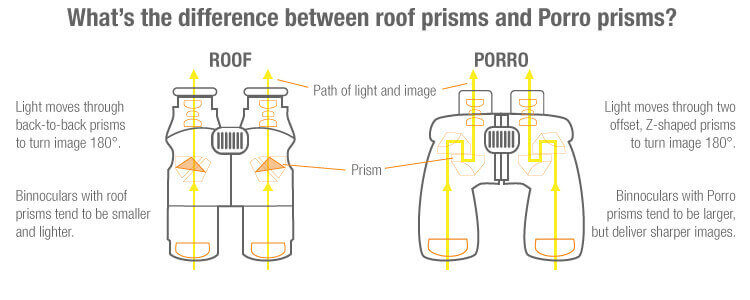
2. Porro/Roof prism
Generally speaking, porro prism binoculars have better image quality than roof binoculars due to its prism construction.
Porro prism binoculars produce image with stereo effect compared to roof prism binoculars.
Due to this fact, roof prism binoculars are lightweight but the image quality is more interesting to the eyes of the viewer.
Stereo effect means you feel and see a depth of the image when looking through porro prism binoculars. You feel the difference between close and distant objects.
So, for better image choose porro prism binoculars. If image depth is not so critical for you and you want lightweight binocular then choose roof prism binoculars.
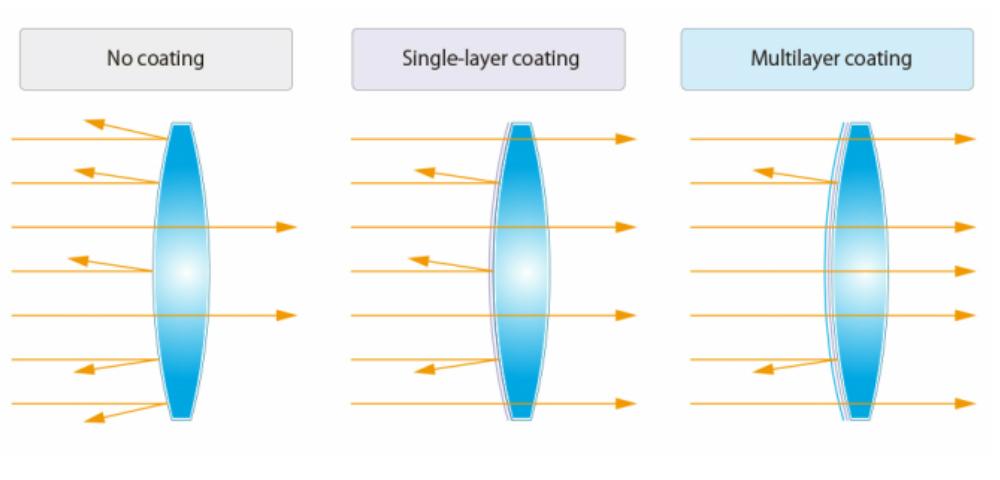
3. Lens coating
Lens coating is another important aspect when looking for a binocular with a good image quality. There are different types of lens coating used in binoculars, such as
1.Coated (single layer antireflection coating)
2.Fully coated (single layer coating on all glasses)
3.Multi-coated (some glass surfaces have multiple layers of antireflection coatings)
4.Fully multi-coated (multiple layers of anti-reflection coatings on all glasses)
where fully multi-coated is the best type of coating used in high-end binoculars. The better is the coating the better is the image in a binocular.
Fully multicoated lenses allow more light to pass through binoculars and as a result you get brighter image.
Anti-reflection coatings used for better light transmission also make image brighter and clearer.
Normally, if a binocular has 6 coated lenses (single layer coating) which means 12 glass surfaces, it means light loss will be around 40%.
This means image will be very dark. A binocular with the same lenses but with fully multi-coated lenses light loss will be around 2.4% which means image quality will be extremely good – improved sharpness, good color palette and better image contrast.
That’s why choose only fully multi-coated binoculars if you are looking for a high quality image.

4. Objective (front lens)
When you choose binoculars keep in mind that the bigger in size the objective (in mm) the brighter is the image.
Because big lens collects more light and a result you get brighter image.
The image in the binocular that has lens of 50mm will be brighter than in the binocular that has lens of 30mm or 40mm. But the size of the objective is not the only aspect you need to pay attention to.
Lens coating is also important like I said in the previous part of my article.
Image quality depends not only on the size of the objective but on the type of lens coating applied in the binocular.
Fully multi-coated lens will give you way brighter and clearer image. But doesn’t always mean you must choose a binocular with the biggest objective available.
Sometimes it depends on the purposes of use.
There are also some other things to keep in mind when choosing a binocular with the best image quality.
There are different types of binoculars:
- Binocular – 25mm objective lens
- Binocular – 30-40mm objective lens
- Binocular – 50-60mm objective lens
- Binocular – 75-80mm objective lens
25mm objective binocular is for observing close objects in day time
30-40mm objective binocular is for observing both close and distant objects in day time and in the evening twilight time
50-60mm objective binocular is for observing both close and distant objects at any time
75-80mm objective binocular is mostly for astronomical observations.
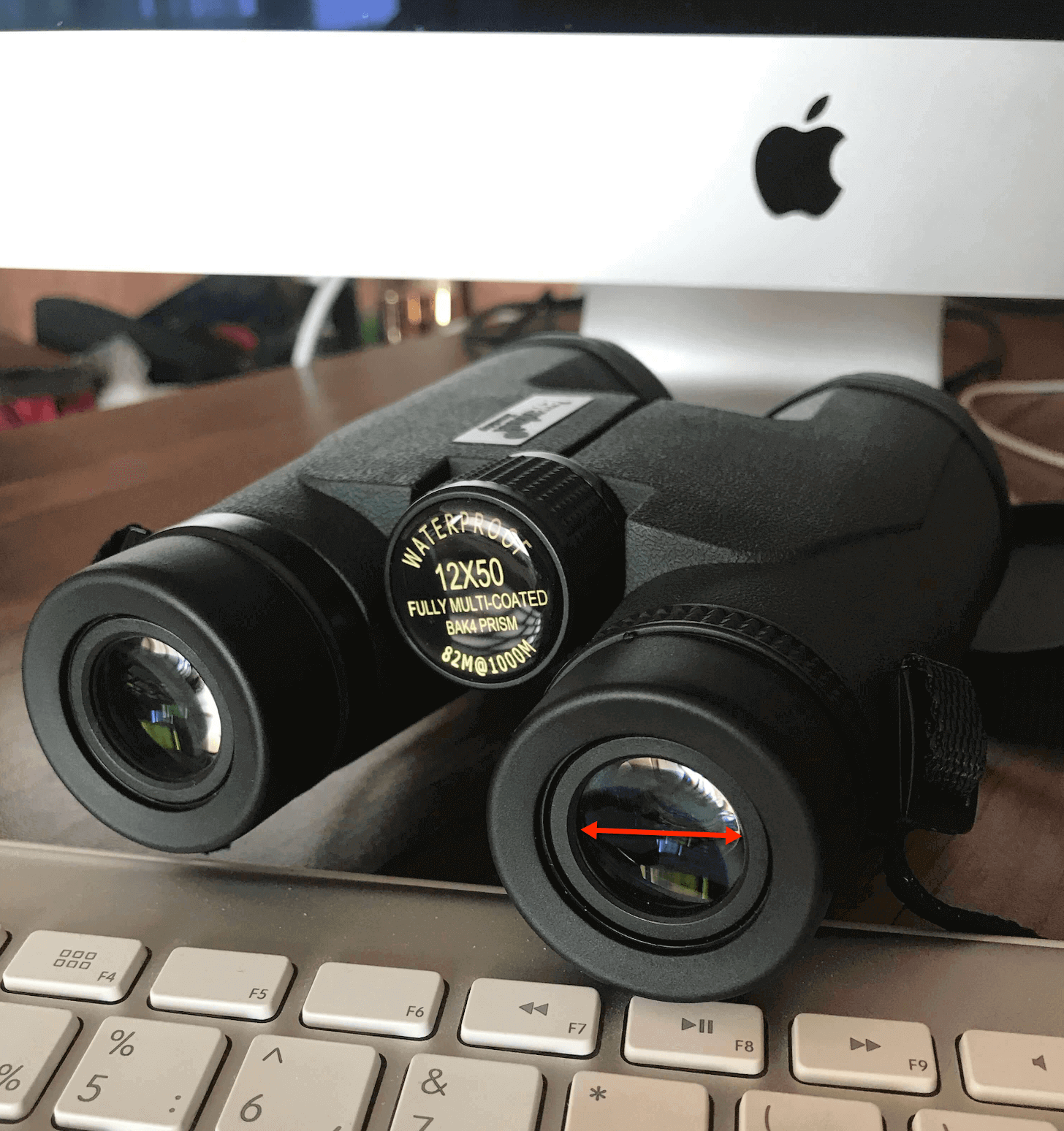
5. Exit pupil
Exit pupil is also an important aspect to keep in mind when choosing a binocular with good image quality.
The bigger the size of an exit pupil (in mm) the more light reaches your eye which results in brighter image. The size of exit pupil also affects your field of view.
The bigger the exit pupil the wider is the field of view in the binocular which makes the image better for the viewer. 3mm is the minimum size for exit pupil of the binocular.
Recommended size would be 4-5mm. Normally, binoculars with magnification 8x have exit pupil 5mm and binoculars with magnification 10x have exit pupil 4mm.
The higher the magnification the smaller is the exit pupil and the field of view accordingly.
For the best image quality I would recommend choosing binoculars with magnification 8x-10x or 12x.
These binocular are well balanced between field of view and the image quality.
6. Zoom vs standard binoculars
The last thing to look at when choosing binoculars is avoiding zoom binoculars all together.
The prism construction of zoom binoculars allows you to change the magnification from 10x up to 60x or from 20x up to 100x.
This undoubtedly has an effect on the image quality which is always blurred and dark on all zoom binoculars.
That’s why if you want to have a perfect binocular with clear, bright and colorful image then avoid all zoom binoculars .




